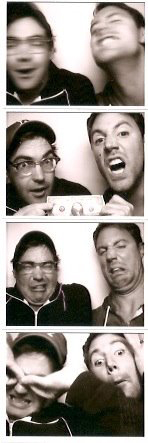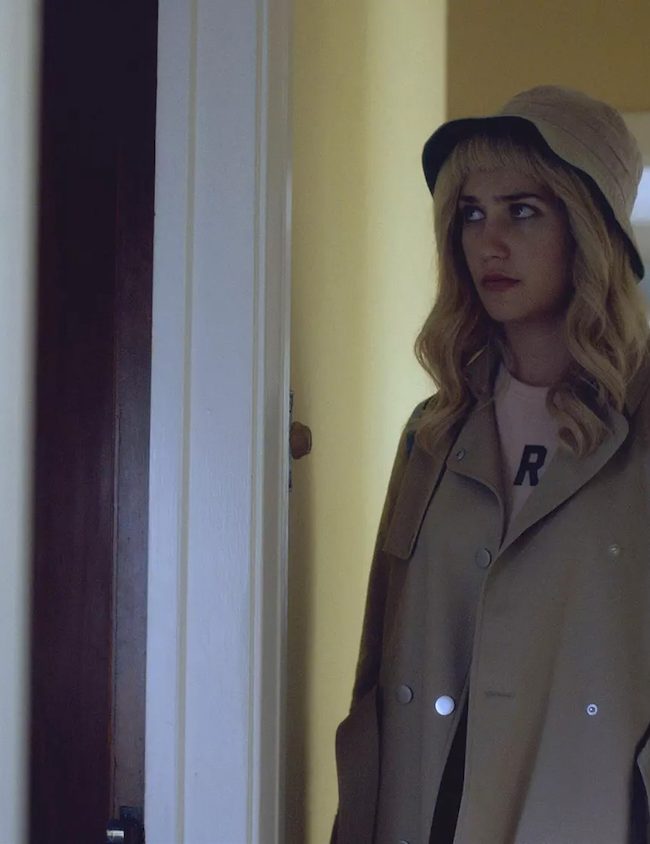The Composing Process: THIS IS MARTIN BONNER
Chad Hartigan’s second feature, This Is Martin Bonner, world premieres in the NEXT Section of the 2013 Sundance Film Festival (screening info: here). Though I haven’t yet seen Hartigan’s follow-up to his charming debut, Luke and Brie Are On A First Date, it nonetheless appears to me that This Is Martin Bonner finds Hartigan graduating to a more mature filmmaking level. Take the teaser trailer for a spin, but don’t just watch it to see what the movie’s about. Today’s assignment is: pay attention to the score!
THIS IS MARTIN BONNER Official Teaser from Chad Hartigan on Vimeo.
Did you pay attention, class? Good. Here, songwriter/composer Keegan DeWitt explains how this hauntingly beautiful music came to be.
 “Chad is one of the few filmmakers I sit with where literally anything is on the table music wise. As we first started to look at footage and talk about This Is Martin Bonner, we listened to a bunch of Opera, a lot of Nina Rota and others, and it added this great depth to Martin’s scenes. It was a bit of nostalgia, but with intelligence, and with temperance. It perfectly highlighted Paul Eenhoorn’s fantastic and subtle performance.
“Chad is one of the few filmmakers I sit with where literally anything is on the table music wise. As we first started to look at footage and talk about This Is Martin Bonner, we listened to a bunch of Opera, a lot of Nina Rota and others, and it added this great depth to Martin’s scenes. It was a bit of nostalgia, but with intelligence, and with temperance. It perfectly highlighted Paul Eenhoorn’s fantastic and subtle performance.
So we started there, writing operatic cues. But then came the issue of “aging” them. We ran them through radios, we added old reverbs, we tried it all. And this sort of worked. We watched through the film, and left pretty happy. But a couple days passed and we both felt a little strange about “mimicking” age in a recording. Exploring how to fix that unlocked something really fantastic.
Both of us had been listening to a lot of William Basinski’s The Disintegration Loops. There is a fantastic Radiolab piece about them as well. These are old tapes that Basinski cut together and created loops out of. He then transferred them to a digital format by playing them over and over and over. And the fruit of that process is being able to literally hear the tapes, and the music on them, disintegrate in real time.
This lit upon something really resonant for us with Martin and Travis… as time passes, things fall away, and what is left. And then on top of that… finding the value in that refinement process.
So we started to beat on that door, disintegrating these operatic cues we had built. We stretched them, we ran them through more broken radios, we reversed them, we stacked them… we did just about everything we could.
In this cue from the trailer, “Starting Over,” we started with a basic score piece, and then slowly disintegrated it to the point where, much like Basinski’s Loops, it’s only beautiful ambient flourishes, rising from nowhere and painted as broadly as possible, with a past, a present and a true “age”.”
Now, let us visit Keegan DeWitt’s Soundcloud page to listen to three original, un-disintegrated music cues before revisiting the emotional-elevation-through-sonic-degradation version that made it into the finished film (and trailer).
1) “Starting Over (piano and strings)”
2) “Starting Over (piano only)”
3) “Starting Over (strings only)”
4) “Starting Over True Disintegration”
This mini-tutorial of sorts provides more than just an insightful glimpse into the process of two ambitious artists. It actually teaches an incredibly valuable lesson to filmmakers of all stripes, whether industry or independent. And that lesson is: one must never settle when it comes to realizing one’s vision—especially if this vision is within one’s reach! When I say “within reach,” I’m most directly referring to putting a premature deadline on a project in order to make the festival cut, even if that festival happens to be one of the most important in the world. Yes, deadlines are good. They’re great, actually. But not when they are premature!
This reminds me of a recent conversation I had with a composer friend, who has become convinced that the reason so many Sundance entries have thin, stripped down, generic, acoustic-y scores is because filmmakers barely have time to picture lock their movies and color correct and sound mix them, let alone spend the necessary time to make sure the accompanying scores do total justice to their films. Based on the trailer of This Is Martin Bonner alone, it’s clear that Hartigan and DeWitt didn’t have that problem. Personally, not only can I not wait to see Hartigan’s movie, but I can’t wait to purchase DeWitt’s score.
— Michael Tully











Pingback: BAMcinemaFest 2013 — An Overview – Hammer to Nail
Pingback: A Conversation With Chad Hartigan (THIS IS MARTIN BONNER) – Hammer to Nail
Pingback: THE 2013 HAMMER TO NAIL AWARDS – Hammer to Nail